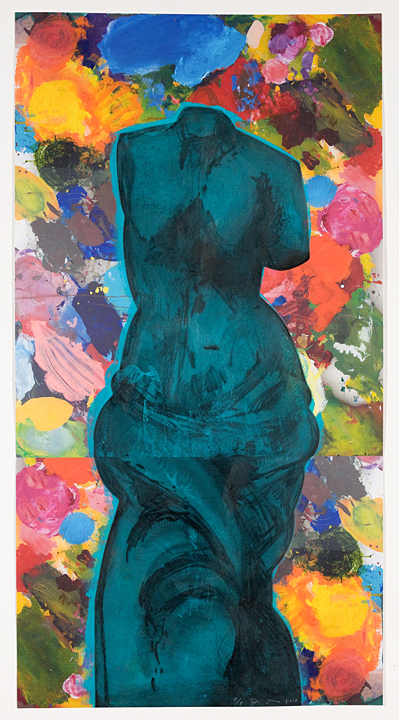Drawing is not an exercise. Exercise is sitting on a stationary bicycle and going nowhere. Drawing is being on a bicycle and taking a journey.
For me to succeed in drawing, I must go fast and arrive somewhere. The quest is to keep the thing alive...
— Jim Dine, 2003
Jim Dine, (born 1935) American painter, graphic artist, sculptor, and poet, has been a dynamic presence in the art world for more than four decades. Since his first solo exhibition in 1960, Dine’s paintings, sculptures, photography, and prints have been the subject of nearly 300 solo exhibitions worldwide. He emerged during the Pop art period as the innovative creator of works that combine the painted canvas with ordinary objects of daily life -- store-bought items such as tools, ties, and bathroom fixtures. Although his name grew to be inextricably linked to pop, the relationship was always an uneasy fit. His highly personal symbolic language was ill-suited to the movement's cool, mechanical approach and he favored expressive, handmade creations over the impassive and mechanical output of other pop artists like Andy Warhol. His method evolved to repeating a theme again and again, often in several mediums. Through this process of exploration and reinvention, his common, repetitive images have become stamped, exclusively, with the artist's signature, and therefore, he must be considered a modern individualist.
Dine studied at the Boston Museum of Fine Arts School and at Ohio University. He moved to New York City in 1958, and there became part of a group of artists, along with Claes Oldenburg and Robert Whitman, who initiated “Happenings”, an early form of performance art. His early work consists primarily of images on canvas to which three-dimensional objects (e.g., articles of clothing, garden tools, etc.) are attached. His reputation was secured during the 1960s with his witty, incongruous painted images of tools, clothes, and other utilitarian household objects, particularly the bathrobe and stylized heart. Later in the 1960’s and 70’s, Dine consciously refined his draftsmanship and painterly techniques, taking greater care and control to achieve a quieter, more romantic and sensual effect. In the 1980s his confidence increased and his work showed a greater emphasis on grand, sweeping gestures, even while exploring a more somber palette.

